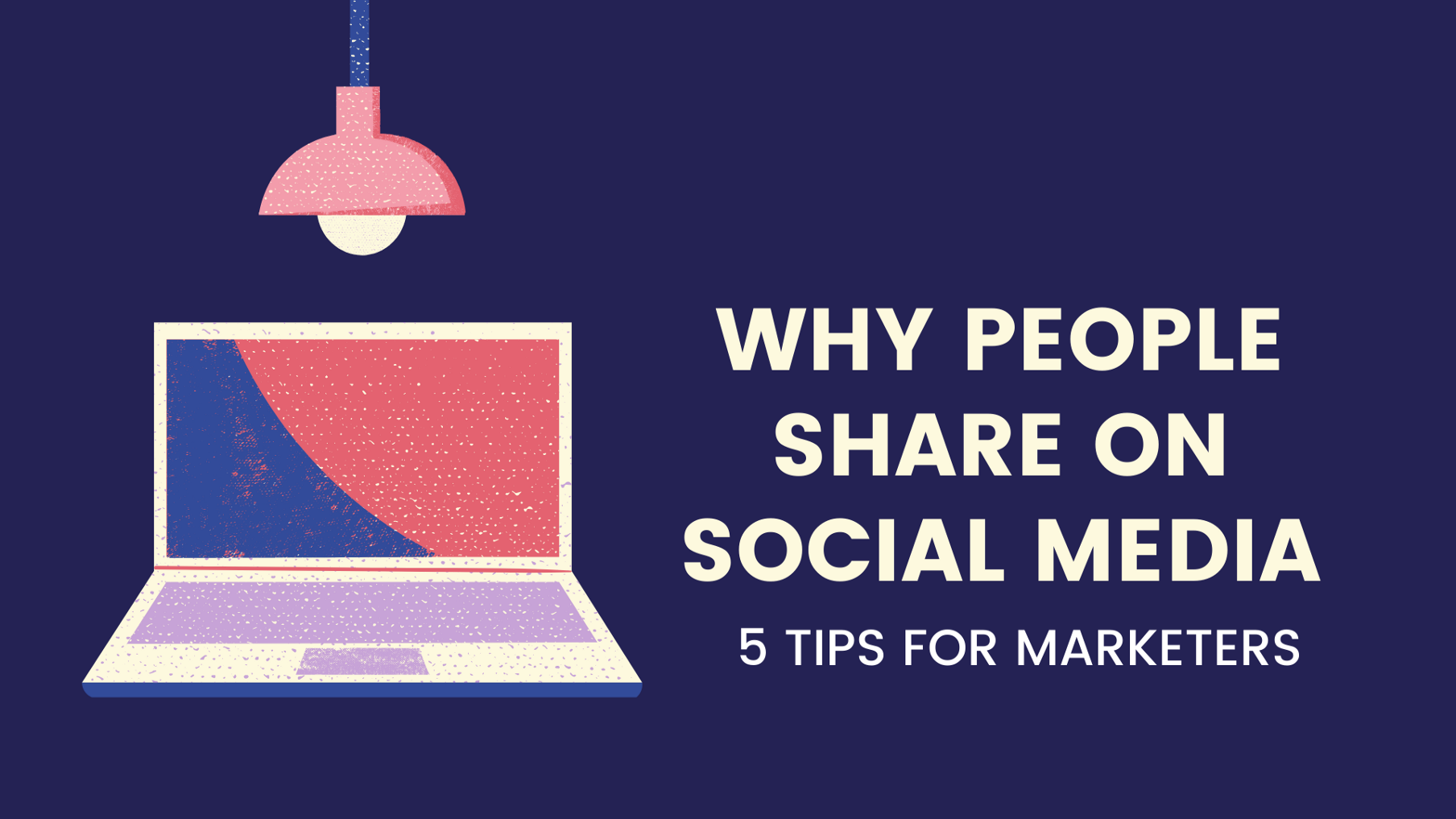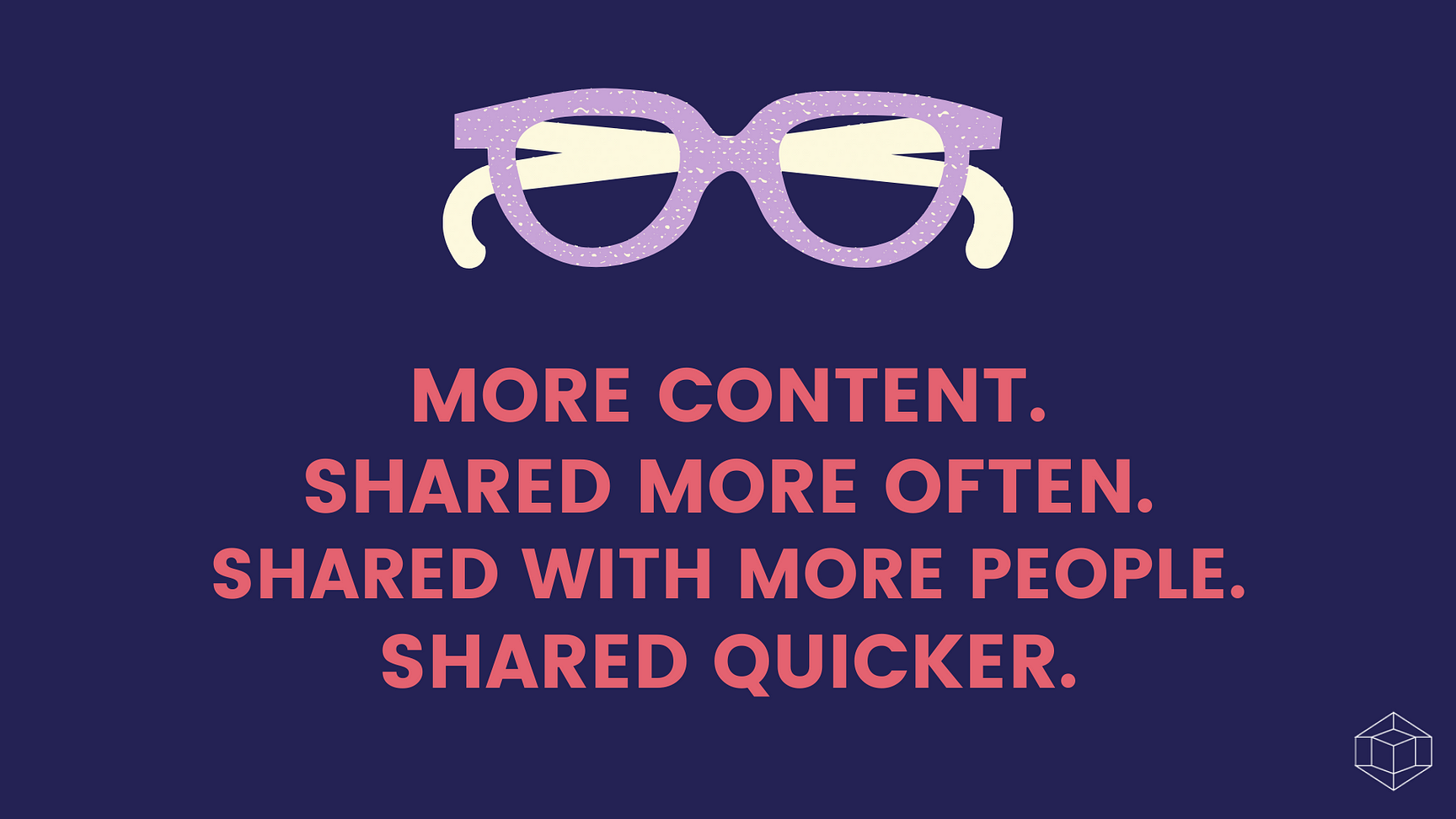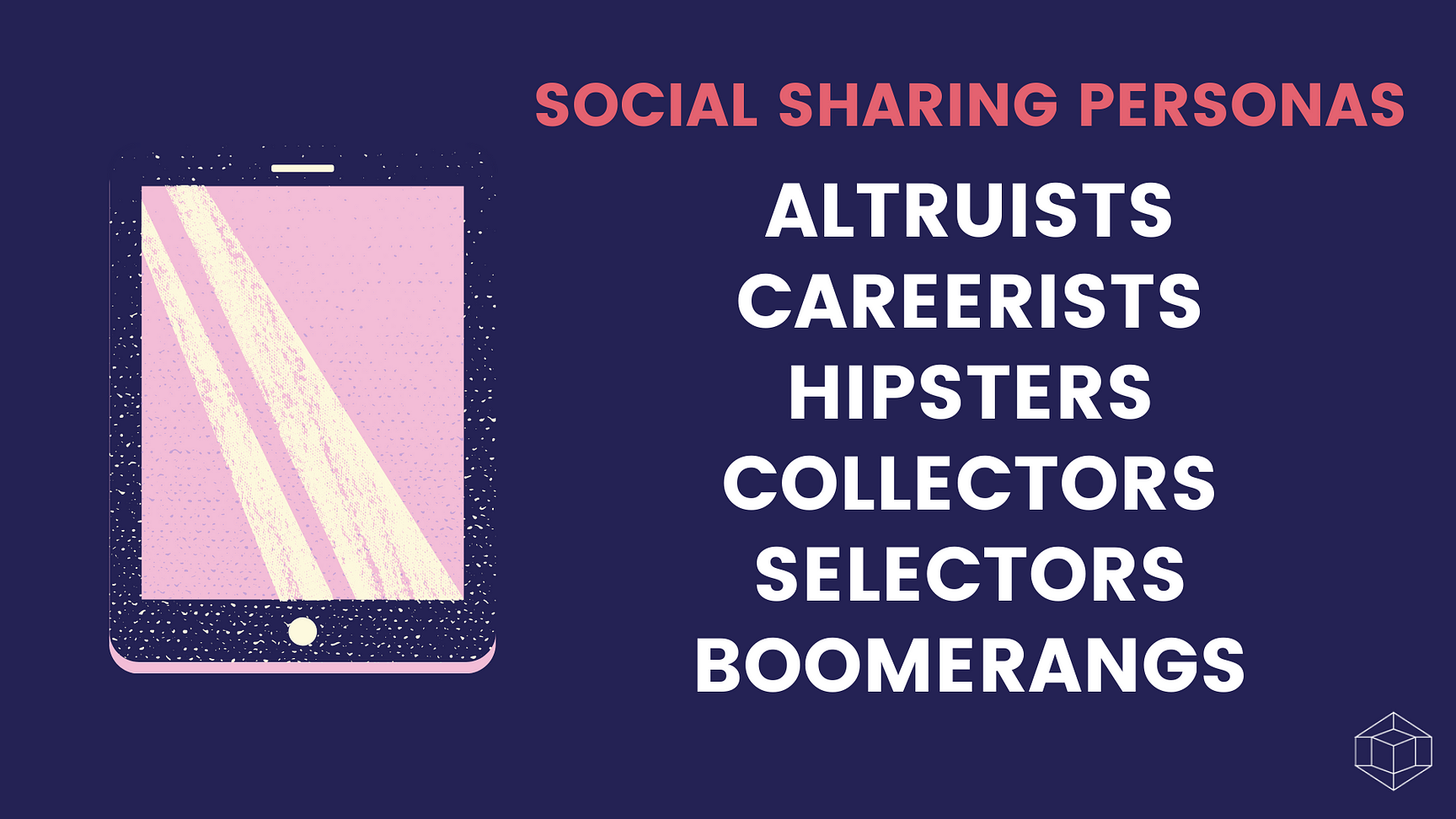
Believe it or not, there’s a whole lot of science behind why people share on social media.
With 3.5 billion daily active users — a number that equates to about 45% of the population — social media is now a huge part of customer’s lives. They spend an average of three hours per day on these platforms and 54% say that use social media to research products and connect with brands.
As businesses understand the relevance of these platforms the social media landscape becomes more and more crowded. This means:

Competition is high, as it is the demand for unique content that resonates with a customer that is “always-on” and constantly being bombed with commercial messages. On top of that, constant changes in algorithms make it more difficult to stand-out among posts, stories, and content created by competitors.
This means that marketers should pair their “gut feeling” with knowledge about how content resonates with their audiences. When it comes to social media, and more specifically, social media sharing, there’s a lot of psychology involved. Just as we, as humans, are droved by emotion offline the same actually happens online.
Have you ever wondered why some content on social media goes viral? Or why some social media trends catch fire and others fall flat?
Understanding the psychology of social media and why people share online is the first step to create better experiences, stronger relationships, and greater marketing content. So, shall we start?
Why people share on social media?
1. People share on social media for personal and social reasons
According to “The Psychology of Sharing”, a study conducted by The New York Times, in general people share content:
- To bring valuable and entertaining content to others;
- To define ourselves to others;
- To grow and nourish relationships;
- For self-fulfillment;
- To market causes or brands.
These elements translate into five primary motivations for sharing:
- People want to better the lives of others (94%);
- People want the content to reflect their online identity (68%);
- People want to grow and nourish relationships (80%);
- People share because they like the feeling of having others comment on it and engage (81%);
- People want to spread the word about something that they believe in (84%).
One of the main reasons why social media sharing sites are so important for modern marketing is because they provide a sense of belonging. Social media gives people a place to share these emotions and connect with others who feel similarly.
2. People share on social media because they’re driven by emotion
Humans are full of emotions and those emotions can even overlap. According to a study conducted by the University of California, there are 27 truly distinct categories of human emotion that can represent a feeling.
Data shows that multiple emotions could be elicited from one specific event rather than just one single feeling and, that, in fact, emotions can overlap. And yes, this happens when your customer is seeing and interacting with your content. That’s why psychology matters when it comes to social media posts.
A study called “Why Content Goes Viral” discovered that content that evoked high-arousal emotions had a better chance of being shared and even become viral. The key emotions that the team identified are:
- Happiness
- Humour
- Wonder
- Awe
- Anger
- Anxiety
- Fear
- Sadness
Note that positive emotions top the list. This is because data actually shows that happiness is the main driver for social media sharing. In fact, an analysis of more than 5 years in social media found that emoji was a common factor among influential and popular social media sharers.
When we see or create an image that enlivens us, we send it to others to give them a bit of energy and effervescence. Every gift holds the spirit of the gifter.
— Abigail Posner (Google)
If you take a look at the some of the most successful social media campaigns of 2019, you’ll see this is true:
DOVE — “Project #ShowUs”
The campaign centers on shattering beauty stereotypes by launching a photo library of 5000 images, created by women and non-binary individuals.
DOVE strategically leveraged the emotional power of UGC (User Generated Content) to let real people themselves led this campaign. This translated into a deeper connection between audiences and the commercial message — actually, according to data, “76 percent of consumers believe the content that average people share is more honest than advertising from brands.”
GILETTE — #TheBestMenCanBe
The campaign is a positive reinforcement of men who are leaders, supporters and mentors in the wake of the #MeToo movement. By tapping into emotions, GILETTE challenged male roles and reinforced positive male role models.
No doubt creativity played a huge role on both campaigns. However, from a scientific perspective, we can now understand why they become so popular. Tapping into emotion is key when it comes to brand communication. This is the right approach to connect with customers on a deeper level. One that ultimately means “shares”.
3. People have different Social Sharing Personas
Referring back to the New York Times article we discussed earlier, data showed that there’s six online sharer personas defined by emotional motivations, desired presentation of self, and role of sharing in life.

- Altruists: helpful and reliable. They are motivated to share by being seen as thoughtful and connected. Their primary sharing vehicle is email.
- Careerists: valuable and networked. They are motivated to share by being seen as intelligent. Their primary sharing vehicle is LinkedIn.
- Hipsters: young and popular. They are motivated to share by being seen as cutting edge and creative. You will find them using multiple social networks or sharing vehicles, but not email.
- Collectors: relaxed, thoughtful and always making plans. They are motivated to share by being seen as creative. Their primary sharing vehicles are email and Facebook.
- Selectors: resourceful and careful. They are motivated to share by being seen as thoughtful and informative. Their preferred sharing vehicle is email.
- Boomerangs: sharers respond to reaction, validation, and empowerment. Their primary sharing vehicles are Twitter and Facebook.
For any social media content, your audience comprises a subset of these personas. Understanding them, especially the ones that you want to target is very important in order to increase content success and the number of shares.
There are three strategies you can implement in this field:
- Study the sharing patterns of your audience to understand which of these personas are interacting with your content;
- Identify the social networks that your audience is sharing your content on;
- Create content that is relevant to the personas you want to attract.
4. People share content with key characteristics
There isn’t a magical formula for content to resonate with people or go viral. Although, this doesn’t mean you can’t engineer your content in such a way that your readers feel compelled to share and amplify your brand’s voice.
You can’t control how your audience is going to react to your content, but you can pave the way for it to have success. This means creating content with certain characteristics that aim to make your audience excited to share it.
By analysing data, Ballatine was able to develop six key characteristics of content that has a high probability of being shared and even become viral:
- Social currency — if a reader believes that sharing a particular piece of information will make them look smarter or more unique, they’re more likely to do so;
- Triggers — a trigger is something that’s instantly connected to your message. If you’re able to put something snappy and memorable in your content, people will be more likely to share it;
- Emotion — content that can elicit emotion in its audience is shared more frequently;
- Public — you don’t want your audience to have any qualms about sharing your content. If something is embarrassing, vulgar, or overly niche, people may not want to share it with their friends and family;
- Practical value — simply put, if people believe something will be useful to their followers, they’ll be eager to repost it;
- Stories — people connect with a story. If your content tells a compelling story, the retweets will pour in.
5. How to Improve Social Media Shares of your Content
There are actually ways you can contribute to encouraging more customers to share more content. According to the data gathered by the New York Times:
- Sharing is how consumers connect with one another. Appeal to consumers’ motivation to connect with others, not just with your brand;
- Trust is the cost of entry for getting shared. If consumers don’t see you as an authority they can trust, they won’t share your content;
- Keep it simple. Publish content on a highly focused topic. This boosts your brand and helps you stand out in a crowded marketplace;
- Appeal to their sense of humor. A little personality and humor can make a big difference;
- Embrace a sense of urgency. If there’s an element of urgency in your content, it appears valuable. As a result, people are more likely to share it;
- Getting content shared is just the beginning. One share is not the endgame. You need to continue to support sharing, and even reach out and say thank you now and then;
- Email is still №1. In a world dominated by social media, don’t forget about email. It’s still the primary way people communicate. So consider making it easy for your readers to share your content via email with a click (unless they are hipsters, of course).
We think that every marketer should also add these strategies to the above list, we:
- Know and understand what your audience wants;
- Originality is key;
- Add value to content;
- Post content during peak hours;
- Content should be easy to read;
- Choose topics people care about;
- Connect with current events or trends.
An engaged following equals to an audience who knows likes and trusts your brand or business. That’s why you’ll want your audience to share your content and make it their own by amplifying it and its message. At its core, successful social media content helps fuel sales, build a community, and unleash strong emotions that last.
The next time you share something or are monitoring how and why your audience shares your content, remember: it´s all about psychology, emotion and, as always, trusting your intuition and knowledge as a great marketer.


